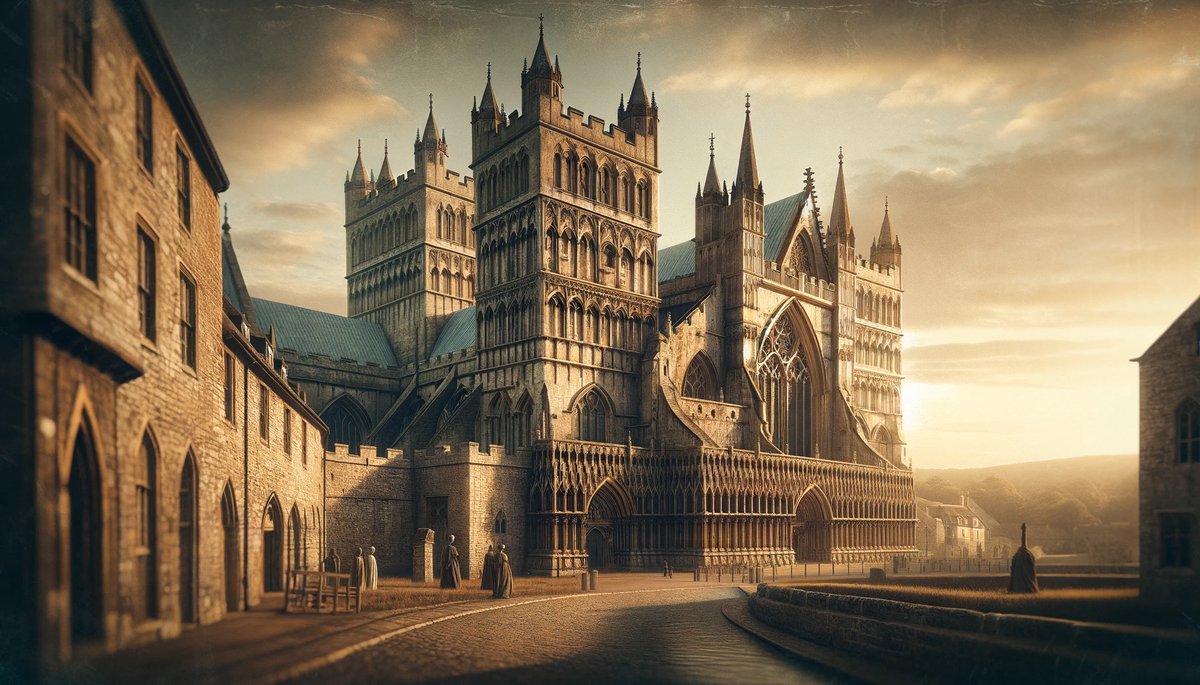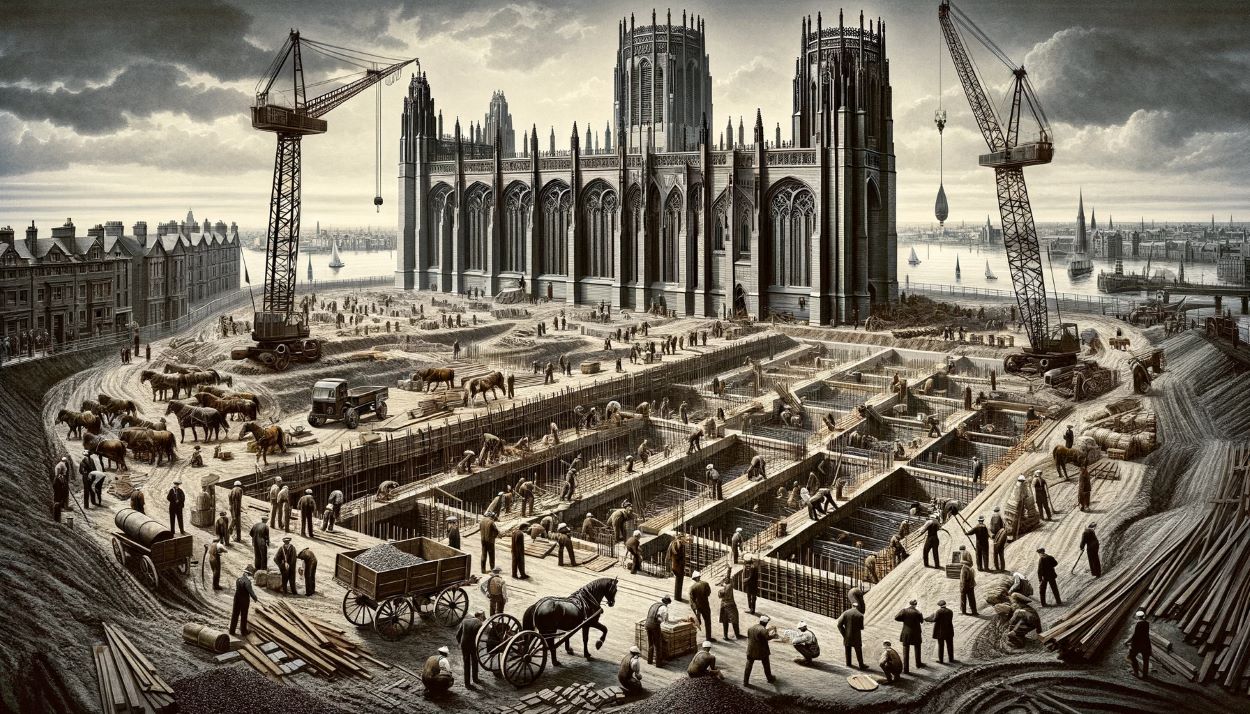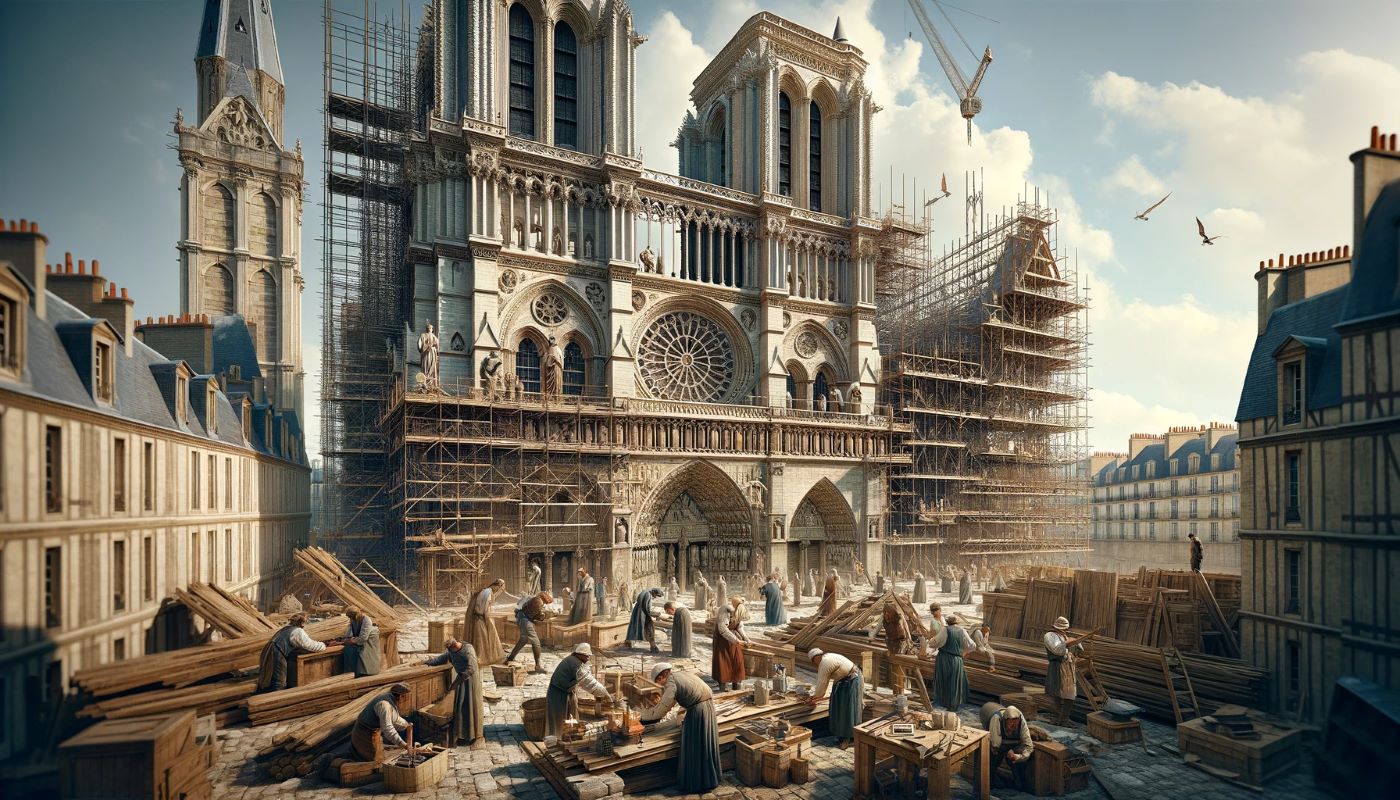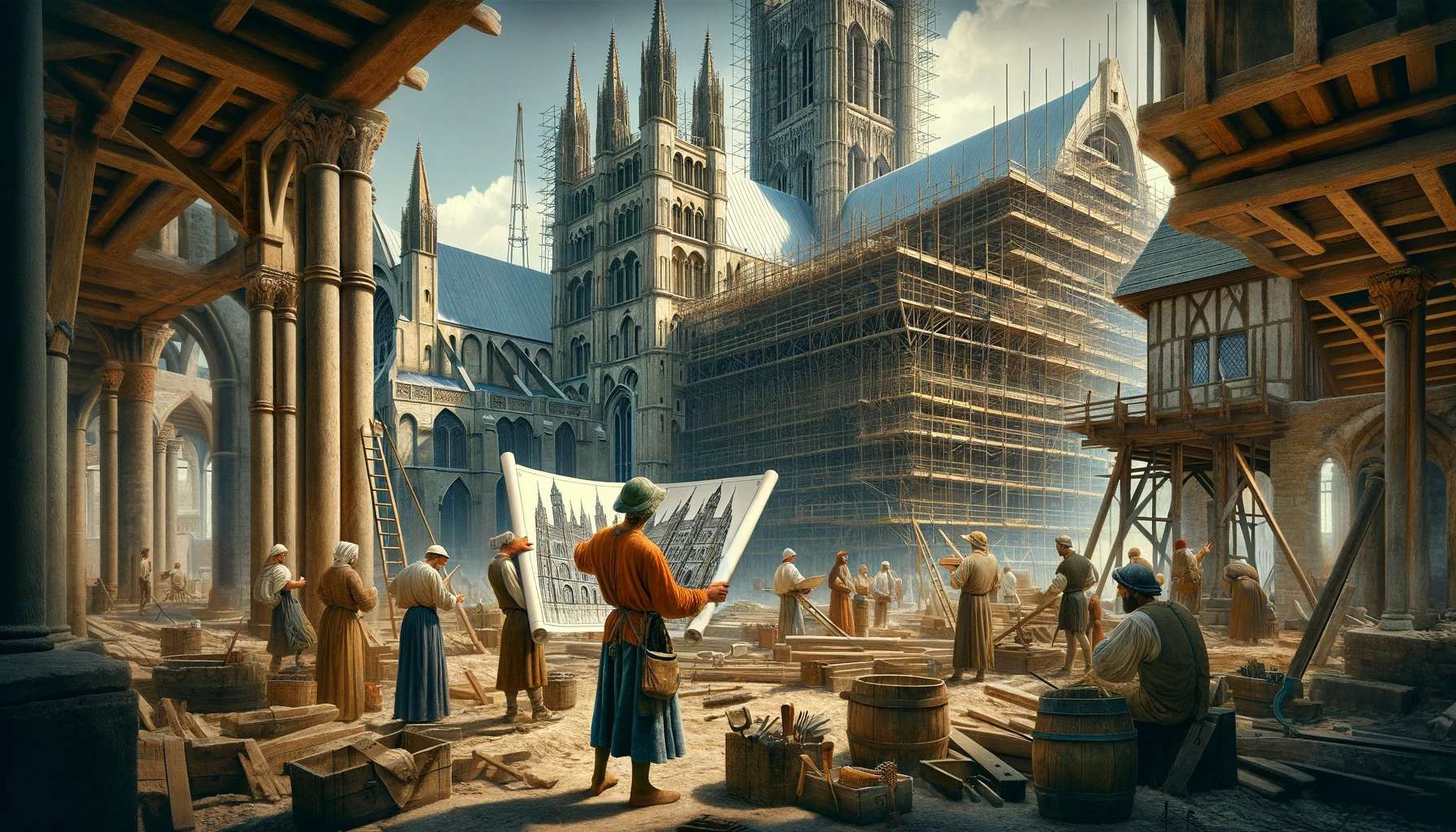Home>Arts and Culture>When Was Saint Giles Cathedral Built?


Arts and Culture
When Was Saint Giles Cathedral Built?
Published: February 18, 2024
Ericka Andersen, an editor at Christian.net, expertly merges digital strategy with content creation, focusing on faith and societal issues. Her communication skills enhance the platform's engaging narratives, fostering meaningful dialogue on belief's impact on society.
Discover the rich history of Saint Giles Cathedral, a masterpiece of arts and culture, and learn when it was built. Explore its architectural significance and cultural impact.
(Many of the links in this article redirect to a specific reviewed product. Your purchase of these products through affiliate links helps to generate commission for Christian.net, at no extra cost. Learn more)
Table of Contents
Introduction
Saint Giles Cathedral, an architectural masterpiece nestled in the heart of Edinburgh, Scotland, stands as a testament to the rich history and cultural heritage of the region. This iconic structure, also known as the High Kirk of Edinburgh, serves as a focal point for both religious worship and tourism, drawing visitors from around the globe to marvel at its awe-inspiring beauty and historical significance.
The cathedral's origins can be traced back to the early 12th century, making it a venerable symbol of Scotland's enduring spiritual and artistic legacy. Its name pays homage to Saint Giles, the patron saint of outcasts and beggars, whose selfless devotion and miraculous deeds have been immortalized in the annals of Christian lore. As such, Saint Giles Cathedral stands not only as a place of worship but also as a monument to compassion and inclusivity.
Stepping through the cathedral's grand entrance, visitors are enveloped in an atmosphere of tranquility and grandeur. The interplay of light and shadow cast by the stained glass windows creates a mesmerizing kaleidoscope of colors, infusing the interior with a sense of ethereal beauty. The soaring vaulted ceilings and intricately carved stone pillars bear witness to the skill and artistry of the craftsmen who dedicated themselves to the construction of this sacred edifice.
Beyond its architectural splendor, Saint Giles Cathedral holds a profound cultural significance. It has been the site of numerous historic events, including royal coronations, making it an integral part of Scotland's regal tapestry. Moreover, the cathedral's association with the Scottish Reformation adds layers of complexity to its narrative, underscoring its role as a witness to the ebb and flow of religious and political upheavals.
In the following sections, we will delve deeper into the captivating history, construction, and architectural features of Saint Giles Cathedral, unraveling the threads of its compelling story and shedding light on its enduring allure. Join us on a journey through time and artistry as we explore the captivating tapestry of Saint Giles Cathedral.
Read more: How Old Is Saint Giles Cathedral
History of Saint Giles Cathedral
The history of Saint Giles Cathedral is a tapestry woven with the threads of time, bearing witness to the ebbs and flows of Scottish history and the evolution of religious practice. Its origins can be traced back to the early 12th century when a small church dedicated to Saint Giles stood on the site. Over the centuries, this humble place of worship underwent a series of transformations, reflecting the changing tides of faith and culture in Scotland.
During the medieval period, the church gained prominence as a center of religious life in Edinburgh, drawing pilgrims and worshippers from near and far. Its significance was further elevated when it became the focal point of the burgh's religious and civic activities. The church's growing influence mirrored the burgeoning power of Edinburgh as a hub of trade and culture, solidifying its place as a cornerstone of the city's identity.
The 16th century ushered in a tumultuous era for Saint Giles Cathedral, as the winds of religious reform swept across Scotland. The Scottish Reformation, spearheaded by figures such as John Knox, brought about seismic shifts in the country's religious landscape. Saint Giles Cathedral became a battleground of ideologies, witnessing fervent debates and impassioned sermons that reverberated within its hallowed walls.
The cathedral's association with the Scottish Reformation imbued it with a profound historical significance, as it stood at the crossroads of religious and political upheaval. The echoes of this transformative period still resonate within the cathedral, serving as a poignant reminder of the enduring impact of the Reformation on Scottish society.
Throughout the centuries, Saint Giles Cathedral has borne witness to a myriad of historic events, from royal ceremonies to acts of worship that have shaped the course of Scottish history. Its enduring presence has made it an integral part of Edinburgh's cultural fabric, a living testament to the resilience and adaptability of faith in the face of change.
Today, Saint Giles Cathedral stands as a living chronicle of Scotland's spiritual and cultural heritage, inviting visitors to immerse themselves in its rich tapestry of history and tradition. Its story continues to unfold, carrying forward the legacy of Saint Giles and the indomitable spirit of the Scottish people.
Construction of Saint Giles Cathedral
The construction of Saint Giles Cathedral, a testament to the ingenuity and craftsmanship of bygone eras, unfolded over several centuries, resulting in the awe-inspiring edifice that stands today. The cathedral's architectural evolution mirrors the shifting currents of artistic styles and building techniques that swept through medieval and Renaissance Europe.
The earliest incarnation of Saint Giles Cathedral, dating back to the 12th century, was a modest church constructed in the Romanesque style, characterized by thick walls, rounded arches, and sturdy pillars. As the spiritual and cultural epicenter of Edinburgh, the church underwent successive expansions and renovations, reflecting the growing influence and prosperity of the city.
The 14th century witnessed a pivotal phase in the cathedral's construction, marked by the transition from Romanesque to Gothic architecture. This shift heralded the introduction of pointed arches, ribbed vaults, and flying buttresses, elements that endowed the cathedral with a sense of verticality and ethereal beauty. The intricate tracery of the stained glass windows, suffusing the interior with a kaleidoscope of colors, became a hallmark of Gothic design, captivating the senses and inspiring awe in worshippers and visitors alike.
The crowning jewel of Saint Giles Cathedral, the Thistle Chapel, stands as a testament to the enduring legacy of craftsmanship and artistry. Constructed in the early 20th century, this exquisite chapel exemplifies the pinnacle of Scottish craftsmanship, adorned with ornate carvings, intricate woodwork, and heraldic symbols that pay homage to the Order of the Thistle, Scotland's highest chivalric order.
The construction of Saint Giles Cathedral stands as a testament to the enduring spirit of human creativity and devotion. From its humble beginnings as a modest church to its transformation into a soaring Gothic masterpiece, the cathedral embodies the collective aspirations and endeavors of generations past. Its architectural splendor continues to inspire wonder and reverence, inviting visitors to embark on a journey through the annals of time and craftsmanship.
As the sun casts its golden rays upon the weathered stones of Saint Giles Cathedral, it illuminates not only a physical structure but also a living testament to the indomitable spirit of human creativity and faith. The cathedral's construction stands as a testament to the enduring legacy of craftsmanship and artistry, inviting visitors to immerse themselves in the timeless beauty of its architectural tapestry.
Architectural Features of Saint Giles Cathedral
The architectural features of Saint Giles Cathedral stand as a testament to the ingenuity and artistry of the craftsmen who contributed to its construction over the centuries. From its humble beginnings as a Romanesque church to its transformation into a soaring Gothic masterpiece, the cathedral embodies a rich tapestry of architectural styles and elements that continue to captivate visitors from around the world.
One of the most striking features of Saint Giles Cathedral is its magnificent stained glass windows, which adorn the interior with a mesmerizing interplay of light and color. These intricate works of art, dating back to the medieval and Renaissance periods, depict biblical scenes, heraldic symbols, and saints, infusing the sacred space with a sense of ethereal beauty and spiritual contemplation. The delicate tracery and vibrant hues of the stained glass windows create a transcendent atmosphere, inviting visitors to immerse themselves in the visual splendor of centuries-old craftsmanship.
The soaring vaulted ceilings of the cathedral, a hallmark of Gothic architecture, inspire a sense of awe and reverence. The ribbed vaults, supported by slender columns and flying buttresses, create a sense of verticality that draws the gaze heavenward. The intricate stone carvings adorning the pillars and arches bear witness to the skill and dedication of the craftsmen who labored to bring this architectural marvel to life. Each sculpted motif and decorative element tells a story, weaving together a narrative of faith, tradition, and artistic expression.
The Thistle Chapel, an architectural gem nestled within the cathedral, exemplifies the pinnacle of Scottish craftsmanship. Adorned with ornate carvings, intricate woodwork, and heraldic symbols, the chapel serves as a testament to the enduring legacy of the Order of the Thistle, Scotland's highest chivalric order. The meticulous attention to detail and the exquisite craftsmanship on display in the Thistle Chapel reflect the unwavering commitment to excellence that has characterized Scottish artistry throughout the ages.
As visitors traverse the hallowed halls of Saint Giles Cathedral, they encounter a symphony of architectural elements that bear the imprint of centuries past. From the intricate tracery of the stained glass windows to the soaring vaulted ceilings and the exquisite craftsmanship of the Thistle Chapel, the cathedral's architectural features invite contemplation and wonder. Each stone, each carving, and each beam of light that filters through the windows serves as a testament to the enduring power of human creativity and the timeless allure of architectural mastery.
Significance of Saint Giles Cathedral
Saint Giles Cathedral holds profound significance as a cultural, historical, and spiritual landmark, weaving together the threads of Scotland's rich tapestry of heritage and tradition. Its enduring allure transcends the boundaries of time, inviting visitors to immerse themselves in its captivating narrative and architectural splendor.
As a testament to the enduring spirit of human creativity and devotion, Saint Giles Cathedral stands as a living chronicle of Scotland's spiritual and cultural heritage. Its storied history, intertwined with the annals of Scottish royalty, religious reform, and artistic achievement, elevates it to a place of unparalleled significance within the heart of Edinburgh.
The cathedral's association with the Scottish Reformation imbues it with a profound historical resonance, as it stood witness to the seismic shifts in religious and political ideologies that shaped the course of Scottish history. The echoes of this transformative period still resonate within its hallowed walls, serving as a poignant reminder of the enduring impact of the Reformation on Scottish society.
Moreover, Saint Giles Cathedral serves as a testament to the enduring legacy of craftsmanship and artistry, exemplified by its architectural features. The intricate tracery of the stained glass windows, the soaring vaulted ceilings, and the exquisite woodwork of the Thistle Chapel bear witness to the skill and dedication of the craftsmen who labored to bring this architectural marvel to life. Each element tells a story, weaving together a narrative of faith, tradition, and artistic expression.
Beyond its architectural splendor, the cathedral's significance extends to its role as a cultural touchstone, drawing pilgrims and visitors from around the world to marvel at its awe-inspiring beauty. It stands as a symbol of compassion and inclusivity, paying homage to Saint Giles, the patron saint of outcasts and beggars, whose legacy of selfless devotion continues to resonate within its sacred precincts.
In essence, Saint Giles Cathedral stands as a testament to the resilience and adaptability of faith in the face of change, inviting visitors to embark on a journey through the annals of time and craftsmanship. Its significance transcends mere architectural grandeur, encapsulating the essence of Scotland's cultural identity and spiritual heritage, ensuring that its legacy endures for generations to come.















